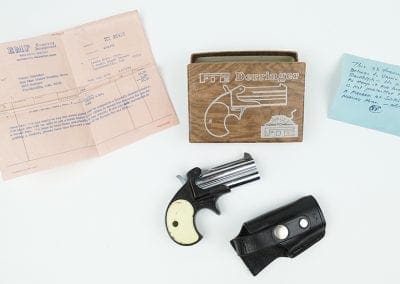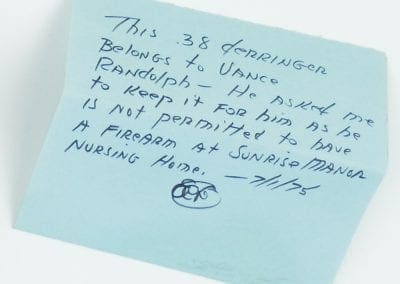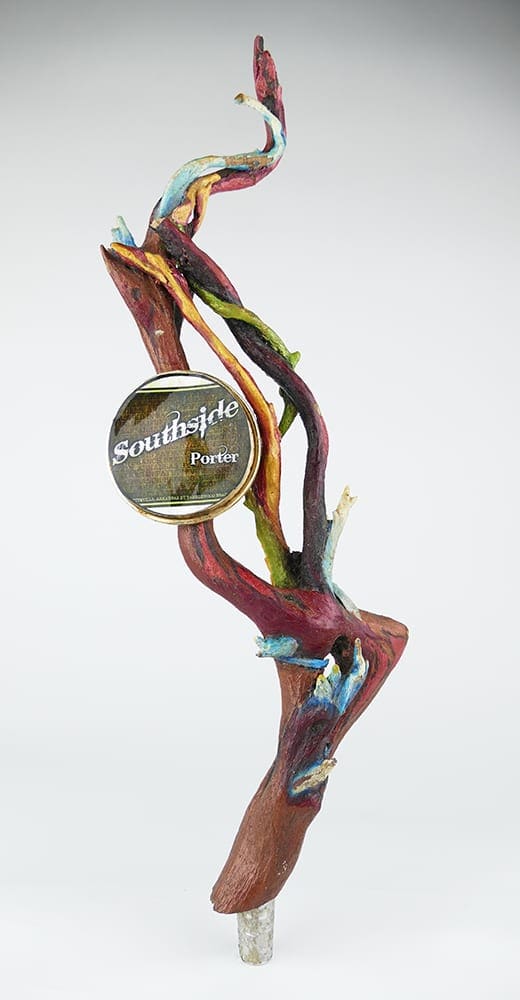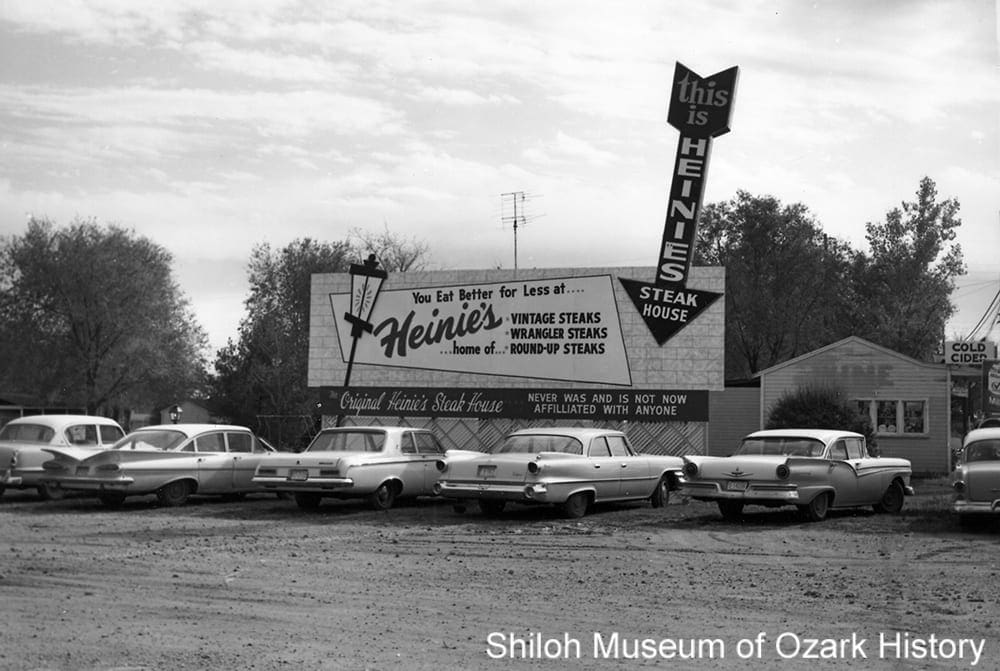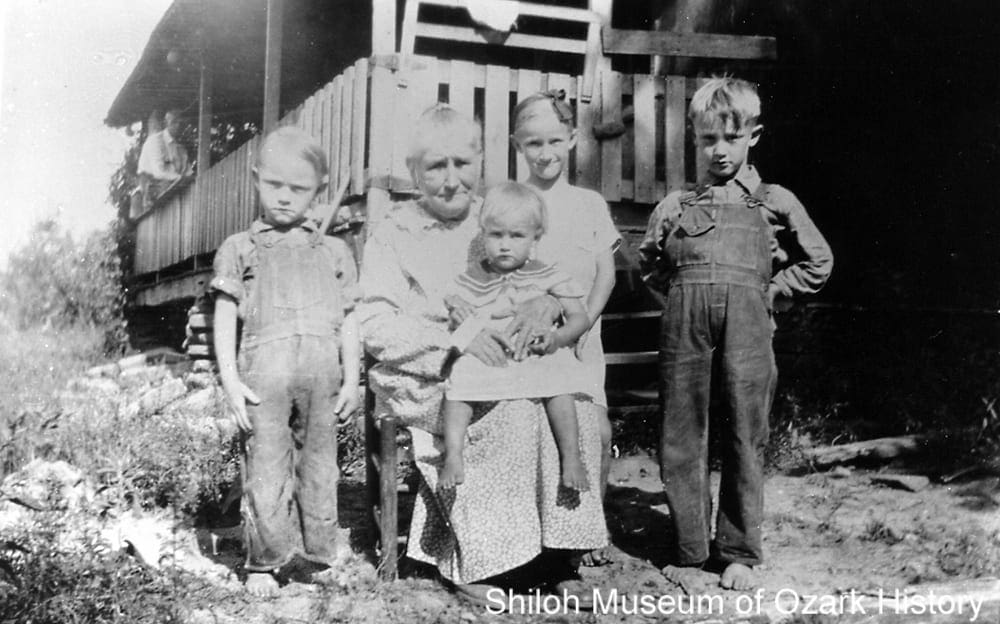Derringer Handgun
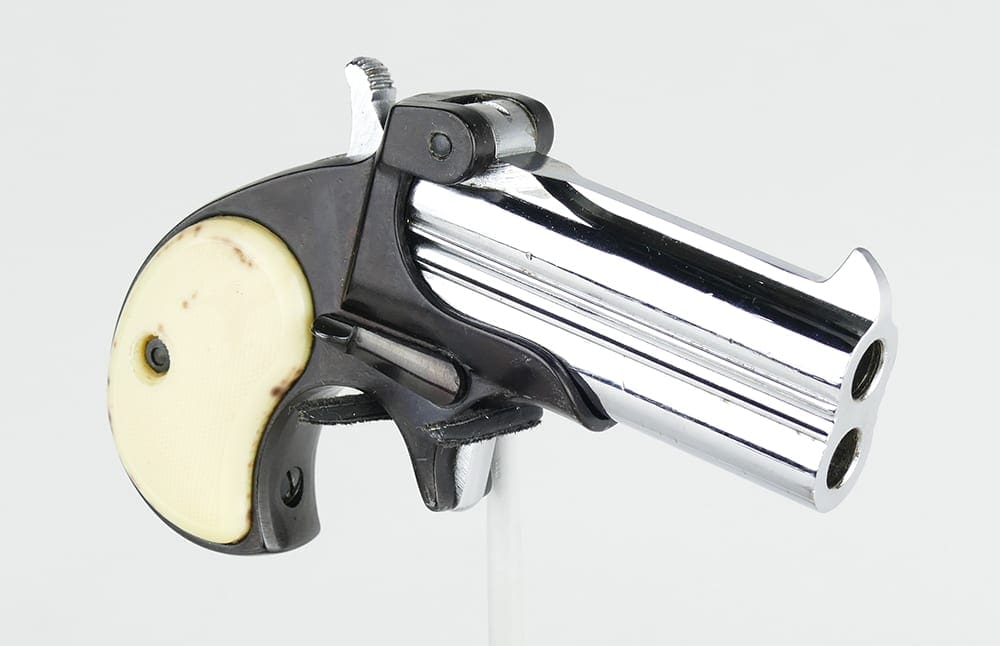 Donated by Frances Deane Alexander
Donated by Frances Deane Alexander
Ozark folklorist Vance Randolph purchased this Derringer handgun in 1975. At that time, he and his wife, folklorist Mary Celestia Parler, lived at Sunrise Manor Nursing Home in Fayetteville. Randolph’s good friend, journalist and historian Ernie Deane, helped Randolph acquire the gun. According to a note written by Deane on July 1, 1975: “This .38 Derringer belongs to Vance Randolph. He asked me to keep it for him has he is not permitted to have a firearm at Sunrise Manor Nursing Home.” (Ernie Deane had a delightful habit of writing brief notes of explanation about items of historical importance that he owned, storing his note with the item for posterity.)
Ernie Deane’s daughter, Fran Alexander, recounts the story of Ernie, Vance, and the Derringer:
“Ernie and Vance had a special relationship. They understood each other.
“Understanding another person, however, does not always put you in a comfortable position. When Vance requested that Ernie be on the receiving end of a pistol mail-order that Vance wanted to place, Ernie began to imagine the problems that might arise when he brought the Derringer into the Sunrise Manor Nursing Home, where Vance and his wife, Mary Parler, lived.
“Vance had assured Ernie that he had no delusions about harboring a pistol in a nursing home, but since he’d always wanted one, he figured it was now or never and asked Ernie, as a friend, to just bring it to him for a visit occasionally. He just wanted to look at it and hold it in his hands.
“This seemed a harmless enough request from an old and very helpless friend, but Ernie was constantly looking over his shoulder for nurses when the Derringer was visiting at Sunrise. He imagined the consequences would be dire, the worst probably being forbidden from ever visiting Vance again.
“Whatever memories, imagined exploits, or real adventures, or why Vance felt admiration for this brand of pistol, will probably never be known, since neither Ernie nor Vance wrote down his feelings on the subject.
“Another of Vance’s requests that Ernie also delivered on was an occasional pint of whiskey, which was not just a visitor, but kept hidden and used “for medicinal purposes.” A bit anxious that his bootlegging activities would also be discovered by the staff always put a sense of suspense and naughtiness into Ernie’s Sunrise visits, probably making the time spent with Vance and Mary even more fun for all concerned.
“When Vance died in 1980, he was buried in one of Ernie’s suits.”
Derringer for website 1
From left: Derringer invoice dated April 30, 1975; Derringer box with handgun and holster; note by Ernie Deane.
Donated by Frances Deane Alexander
Ozark folklorist Vance Randolph purchased this Derringer handgun in 1975. At that time he and his wife, folklorist Mary Celestia Parler, lived at Sunrise Manor Nursing Home in Fayetteville. Randolph’s good friend, journalist and historian Ernie Deane, helped Randolph acquire the gun. According to a note written by Deane on July 1, 1975: “This .38 Derringer belongs to Vance Randolph. He asked me to keep it for him has he is not permitted to have a firearm at Sunrise Manor Nursing Home.” (Ernie Deane had a delightful habit of writing brief notes of explanation about items of historical importance that he owned, storing his note with the item for posterity.)
Ernie Deane’s daughter, Fran Alexander, recounts the story of Ernie, Vance, and the Derringer:
“Ernie and Vance had a special relationship. They understood each other.
“Understanding another person, however, does not always put you in a comfortable position. When Vance requested that Ernie be on the receiving end of a pistol mail-order that Vance wanted to place, Ernie began to imagine the problems that might arise when he brought the Derringer into the Sunrise Manor Nursing Home, where Vance and his wife, Mary Parler, lived.
“Vance had assured Ernie that he had no delusions about harboring a pistol in a nursing home, but since he’d always wanted one, he figured it was now or never and asked Ernie, as a friend, to just bring it to him for a visit occasionally. He just wanted to look at it and hold it in his hands.
“This seemed a harmless enough request from an old and very helpless friend, but Ernie was constantly looking over his shoulder for nurses when the Derringer was visiting at Sunrise. He imagined the consequences would be dire, the worst probably being forbidden from ever visiting Vance again.
“Whatever memories, imagined exploits, or real adventures, or why Vance felt admiration for this brand of pistol, will probably never be known, since neither Ernie nor Vance wrote down his feelings on the subject.
“Another of Vance’s requests that Ernie also delivered on was an occasional pint of whiskey, which was not just a visitor, but kept hidden and used “for medicinal purposes.” A bit anxious that his bootlegging activities would also be discovered by the staff always put a sense of suspense and naughtiness into Ernie’s Sunrise visits, probably making the time spent with Vance and Mary even more fun for all concerned.
“When Vance died in 1980, he was buried in one of Ernie’s suits.”
Derringer for website 1
From left: Derringer invoice dated April 30, 1975; Derringer box with handgun and holster; note by Ernie Deane.

